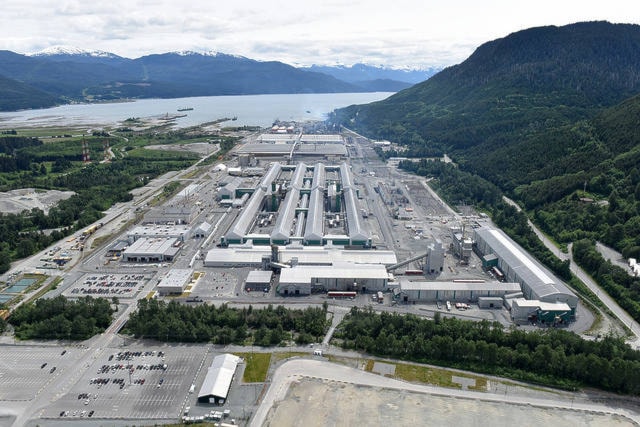The Kitimat and Terrace areas risk losing what might someday be an enviable commodity — clean air, says a retired Northern Health Authority chief medical health officer.
Speaking to a recent Terrace council meeting, Dr. David Bowering warned of the accumulated effects of sulphur dioxide (S02) from Rio Tinto’s modernized Kitimat aluminum smelter.
Although a new smelting process has drastically reduced the quantity of particulate and by-product emissions, that’s not been the case with S02.
Because the new smelter produces more aluminum than its predecessor, it has a permit to emit 42 metric tonnes a day of S02. Information supplied by Rio Tinto estimates that the new smelter emits just over 30 tonnes per day, up from the old smelter’s 27 metric tonnes a day.
Over the next decades it could very well result in higher levels of respiratory, asthma, cardio-vascular and other ailments leading to illness and mortality, Bowering said in an interview after the meeting.
“I’ve said this all before but I wanted to counter a presentation Rio Tinto had made to council. I wanted to provide a little balance,” he said.
Bowering said his S02 emissions worries were also underpinned after learning Terrace council members had just been on a trip to China to promote the Chinese-owned section of the Skeena Industrial Development Park south of the Northwest Regional Airport.
“I told them you would have experienced almost unbreathable air,” said Bowering.
“This area could one day be the location for fresh air vacations and what we have could be a world-wide legacy,” he continued.
While the provincial government accepted Rio Tinto’s position that S02 emissions would not be harmful and would be dispersed throughout the area’s airshed, Bowering likened the situation to the 1940s when tobacco companies downplayed the effects of smoking on human health, a factor that was only affirmed after years of research and studies.
Bowering also noted that studies modeling air dispersion done for Rio Tinto as part of its environmental filings did not consider the effects of climate change on the regional airshed in the coming years.
During his time as the Northern Health Authority’s chief medical officer, Bowering lobbied for the installation of scubber’s in the smelter’s new stacks, something he said would reduce potential health risks to people living in the area.
But provincial environmental authorities ultimately decided scrubbers would not be needed, something that’s now under appeal by Unifor, the union that represents smelter workers.
“Ultimately, there really are no safe levels [of emissions] and over the long term, serious problems will arise,” said Bowering.
In response to Bowering’s comments, a spokesperson from Rio Tinto said the company actively considered installing scrubbers but decided air dispersion was the best way after an 18-month assessment. The spokesperson went on to say the smelter’s current emissions are well within the BC Ministry of Environment guidelines.
“We are committed to keeping community members informed about air quality and weekly reports on the SO2 readings and data from the air monitoring stations is available through our BC Works Facebook page or people can sign up to receive the reports directly each week.”
